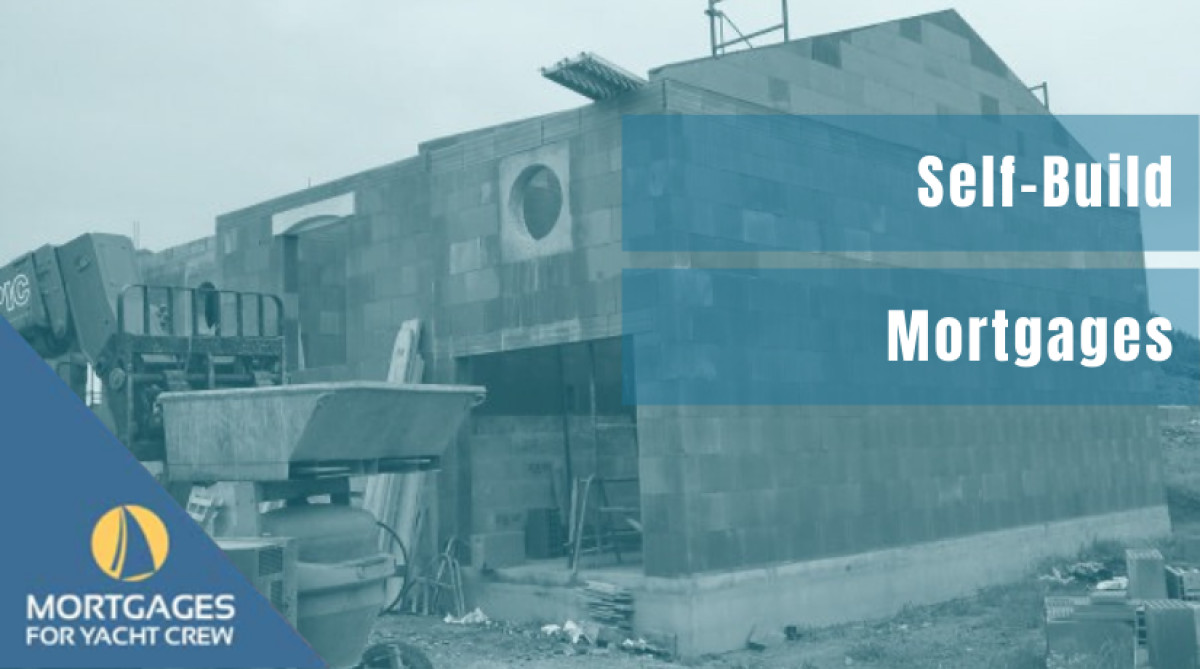Self-Build Mortgages
- Authors
-
-

- Name
- Patrick Maflin
-

If you are thinking of creating your own Grand Design by building your own home, there are several factors to consider, especially when it comes to raising money to fund the build. While building your own home is usually cheaper than buying a house, there can be unexpected costs and you will have to deal with any issues that arise during the build.
Unless you have savings or another property to sell to raise the cash to finance the project, it is likely you will need a mortgage… and a large deposit! You can usually borrow up to 75% of the cost of the land to build on and then a further 60% of the building costs which can include purchasing building materials and paying contractors and workmen.
Self-build mortgages pay out in stages to coincide with buying the land and then the building process, and to protect the lender from the risk involved in providing money against a property that has not yet been built.
The stages for a self-build are usually: purchase of land (with at least outline planning permission); substructure, wallplate/eaves height (just before the roof trusses go on); wind and watertight roof tiled; first fix; second fix, and certified completion. Or for a renovation or conversion project: purchase of existing structure; inspected completion of structural survey and cost estimate of necessary works; completion of load bearing elements; first fix; second fix, and certified completion.
Types of Self-Build Mortgage
If you have the cash-flow to finance building work, you could apply for an arrears self-build mortgage which repays you the costs on completion of each stage. However, should you overspend on one stage, you can only get more money once the next stage is completed.
Alternatively, if you don’t have the money to pay upfront, then an advance self-build mortgage may suit you better as you receive the money at the start of each stage. Unfortunately, there aren’t as many lenders offering this option and interest rates tend to be higher as a result.
As self-build mortgages are viewed as specialist lending, and a bigger risk to the lender, you will usually pay higher interest rates and charges than you would for a standard residential mortgage as there are also fewer available on the market. Once the house is completed, it is therefore important to remortgage to a cheaper residential mortgage (assuming you will not be liable for any early repayment penalties). If the value of the property (as confirmed by a RICS-qualified surveyor) has gone up in the time it’s taken to build, you may already have equity that you can use to negotiate a lower interest rate.
Self-build mortgages also differ from residential mortgages in the term they are taken out for – usually only as long as the house build is anticipated to take. This means they could be as short as two years, but are also subject to early repayment penalties. However, some lenders allow for the mortgage to be taken out on an interest-only basis while the build is taking place, meaning you would only pay the interest on the loan and not additional payments to clear the loan itself.
How to Get a Self-Build Mortgage
As with any mortgage application, you will be required to provide evidence of your income, outgoings (including costs of living during the build if you will be paying rent) and any debt to calculate your affordability, or how much you could borrow. You will need to prove that you have sufficient funds and knowhow to complete the project.
In addition to the standard documentation, the lender will also want to see the planning permission; construction drawings and specifications; building regulations approval; site self-build insurance and a 10-year structural warranty policy; architect’s professional indemnity cover (if required); and SAP calculation (as part of the Building Regulations package).
You will need to notify the lender of the build type for your project and any payment terms that you have agreed with suppliers. Some lenders may expect you to have a fixed budget for the build cost, while others may request this information from a qualified quantity surveyor.
You will also need to provide the lender with the plans, land purchase cost and associated fees; project costs including project management, including health and safety compliance and a minimum contingency fund to cover any issues that come up during the build; demolition and/or site preparation; construction design fees, and construction costs.
Help to Build
The government has recently introduced a new scheme in England that offers an equity loan of between 5% and 20% of the estimated build cost (or up to 40% in London) that will be paid to your Help to Build registered mortgage lender after you have completed your home build project and switched to a repayment mortgage.
If you are thinking about taking the self-build route into home ownership, get in touch with us at Cormorant Mortgages to discuss your plans and your options for getting a specialist mortgage.